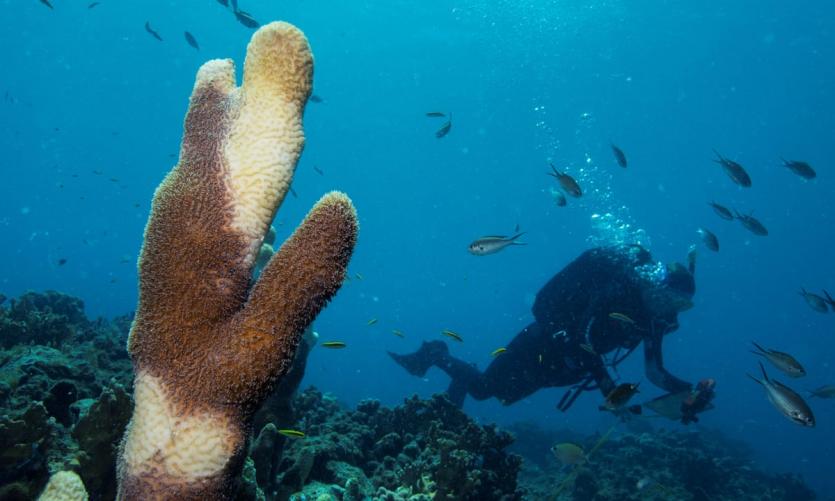A researcher off the Virgin Islands swims past a pillar coral showing signs of stony coral tissue loss disease. Photo:Reuters
By Patryk Krych | The World Daily | JULY 22th 2021
According to recent research, a deadly disease that has been sweeping the Caribbean and having noticeably adverse effects on corals may in fact be linked to the waste and ballast water coming off of ships in the region.
Having originally been identified back in 2014, in Florida, the so-called stony coral tissue loss disease (SCTLD) has been a prevalent issue since its discovery. It spreads fast, comparatively to other known coral diseases, and is thought to be among, if not the most deadly diseases affecting corals. It’s confused and concerned scientists for years, but recent research may suggest a link of origin.
“The disease is spread along about 75km of reef tract, about 46 miles – so for Grand Bahama that is a large structure of reef,” said the senior scientist at the Perry Institute and a co-author of the recently published research, Krista Sherman. “We’re talking about mostly covering the entire southern coastline of the island.”
The disease, SCTLD, had been discovered to have spread to the Bahamas in the December of 2019. It was also found in Jamaica in 2018, then in the Mexican Caribbean, Sint Maarten before its discovery in the Bahamas. Since then, it’s been found in at least 18 more countries, causing quite a stir in the marine biodiversity of many areas.
Though scientists have yet to determine the exact nature of the disease, whether it’s bacterial, viral, chemical or otherwise, the peer-reviewed research they’d conducted, which was published in the journal Frontiers in Marine Science, had pointed out a notable link between the release of ballast waters from local ships, and the disease.
The primarily link was that the SCTLD disease was had much more presence in reefs that were closer to the Bahamas’ main commercial ports, where ships are more commonly found. The research had been conducted there, in the Bahamas, at the Perry Institute for Marine Science.
“The prevailing currents in the Caribbean push seawater to Florida and not in the reverse direction, and the predominant wind direction is westward. So human dispersal [to those three territories] in 2018 seems necessary,” said the scientific director at the Atlantic and Gulf Rapid Reef Assessment project, which tracks the spread of the disease, Judith Lang.






